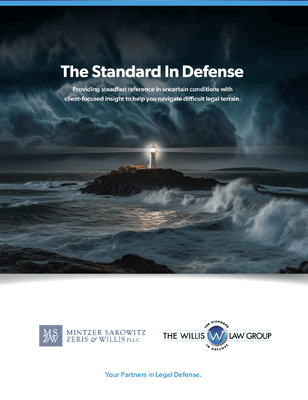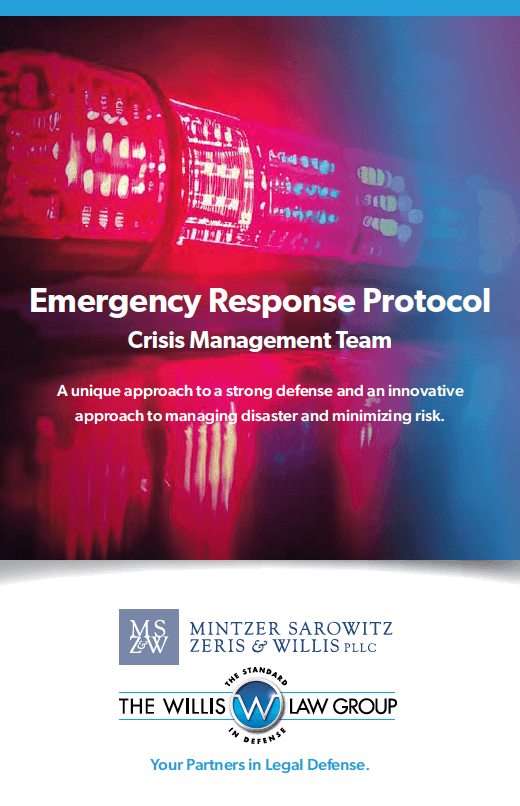WHAT YOU NEED TO KNOW ABOUT THE EXPANSION TO THE FMLA AND THE EMERGENCY PAID SICK LEAVE LAW UNDER THE FAMILIES FIRST CORONAVIRUS RESPONSE ACT
Mar 25, 2020 - News by Bradley K. Shafer
WHAT YOU NEED TO KNOW ABOUT THE EXPANSION TO THE FMLA AND THE EMERGENCY PAID SICK LEAVE LAW UNDER THE FAMILIES FIRST CORONAVIRUS RESPONSE ACT
On March 18, 2020, President Trump signed HR 6201 which is titled the Families First Coronavirus Response Act. While the Act addresses a number of topics relating to the COVID 19 pandemic, employers are particularly interested in the expansion of FMLA, the Emergency Paid Sick Leave, and the payroll tax credit. This article discusses each of these matters in turn.
First and foremost, the new provisions do not take effect until April 2, 2020. Accordingly, no new obligations arise until then. Then, unless Congress acts, these provisions expire on December 31, 2020.
Second, the new law does not apply to everyone. Employers that have 500 or more employees are not covered. What this means is that none of these new benefits are available to employees working for companies with more than 499 unless the company voluntarily agrees to make them available. If the company chooses to do so, it cannot take part in the tax credit discussed below.
The expanded FMLA makes leave available based upon a “public health emergency” which right now is limited exclusively to the COVID 19 pandemic. Again, forget about the traditional 50 employees within 75 miles rule previously established by the FMLA. This expansion does away with that criteria and it applies to employers with less than 500 employees as well as state and local government and governmental agencies. To be eligible, the requesting employee must have worked for the employer for at least thirty calendar days.
The FMLA expansion is very limited. It only applies when the employee is unable to come to work and is also unable to work from home. The sole basis for the leave is the need to provide care to the employee’s son or daughter, who must be under the age of 18, and must be unable to attend school, day care, babysitting, or whatever form of paid child care existed because of the COVID 19 pandemic. If the employee is actually sick with the coronavirus, that is to be handled under the old FMLA rules.
Employees that qualify for the FMLA expansion to provide child care receive the standard 12 weeks of leave. However, this particular form of FMLA leave is paid. The first ten days are unpaid under FMLA, but can be paid through the Emergency Sick Leave Act discussed later. After the tenth day, payment can be made pursuant to FMLA. Payment is to be two thirds of the employees regular rate of pay up to a maximum of $200 per day and $10,000 for the entire leave.
Like the expanded FMLA provision, the Emergency Paid Sick Leave Provision only applies to governmental entities and employers with less than 500 employees. And, like the expanded FMLA it only applies when the employee cannot come to work and cannot work from home or some other off site location. To be eligible, the employee must meet one of six criteria:
- The employee is in quarantine for coronavirus reasons as ordered by the Federal/State/ or Local authority;
- The employee is in self-quarantine for coronavirus reasons as ordered by a health care provider;
- The employee is experiencing COVID-19 type symptoms and is seeking a medical diagnosis;
- The employee is caring for an individual that falls under circumstances 1 or 2;
- The employee is caring for a son/daughter under the age of 18 whose school is closed or day care provider/center is closed or unavailable because of COVID-19;
- The employee is experiencing some other situation that is substantially similar to Items 1-5 as determined by the Sec of Treasury or Labor in regulations yet to be issued.
Full time employees are eligible for up to eighty hours of Emergency Paid Sick Leave. Part time employees are eligible for the average number of hours they work during the two week pay period. If the employee’s schedule varies, then take the average number of hours worked over the previous six months. If the employee did not work during that time period then take the number of hours the employee reasonably expected to work at the time of hiring.
Sick leave shall be paid at the employee’ regular rate of pay but cannot receive more than $511 per day or $5,110 for the entire leave period if the leave is necessary due to reasons 1-3 above. If the leave is made necessary due to reasons 4-6 above, then the employee shall receive the regular rate of pay but cannot receive more than $200 per day or $2,000 for the duration of the leave.
This leave is in addition to all other forms of paid leave offered by the Company or required by Federal, State, or Local Law. When multiple forms of paid leave are available, the employee may choose to use the Emergency Paid Sick Leave first, and then the other leaves next.
Employees making use of Emergency Paid Sick Leave are required to use the Company call off procedure in the employee handbook starting with the first full day following the first use of the sick leave.
There is an anti-discrimination provision in the law along with the ability to recover damages if such a claim is proven. There is also a posting obligation for both the new FMLA and the Paid Sick Leave law, but the posters are not yet available. They should be available on the US Department of Labor website starting March 25.
Under the payroll tax provision of the Act, employers can recover what was paid to employees pursuant to this Act in the form of a tax credit to be applied when the quarterly tax payment is due. Regulations have yet to be drafted, so it is unclear if the tax credit exceeds the amount of tax due if the remaining credit rolls over to the next tax payment or if a refund check is issued.
Finally, there is the possibility for employers with 50 or less employees to opt out of these requirements. To opt out, the employer must show that compliance will jeopardize the ability of the employer to remain an ongoing concern. The criteria for such a showing is to be set forth in regulations issued by the US Department of Labor at a later date.



